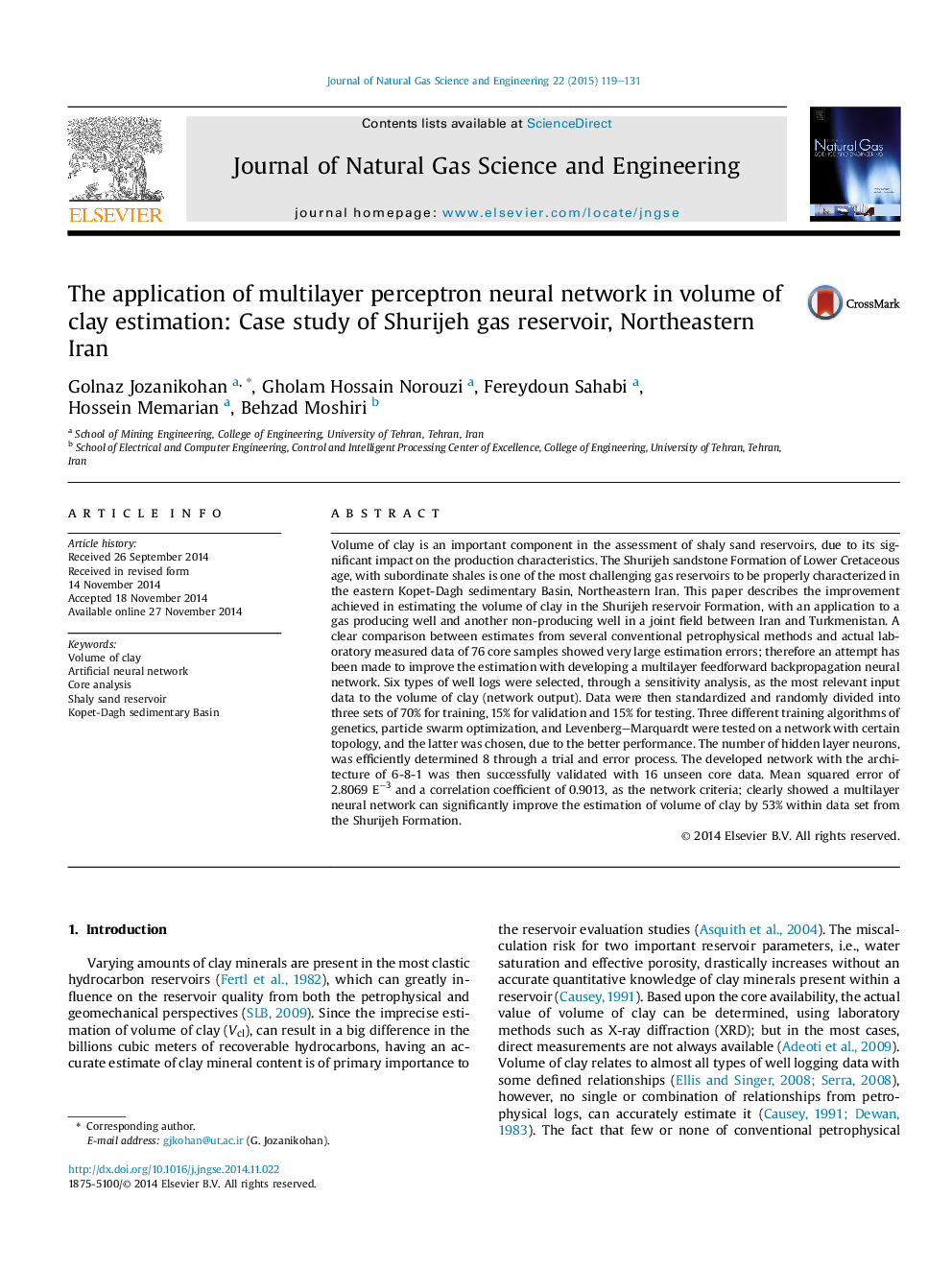| کد مقاله | کد نشریه | سال انتشار | مقاله انگلیسی | نسخه تمام متن |
|---|---|---|---|---|
| 1757796 | 1523018 | 2015 | 13 صفحه PDF | دانلود رایگان |
• An MLP model was trained to estimate the volume of clay in an Iranian gas reservoir.
• Among training algorithms, LMA had better performance than the GA and PSOA.
• The highest performance was achieved with a network topology of 6-8-1 at epoch 62.
• Two optimal network criteria, MSE and R were 2.8069 E−3 and 0.9013, respectively.
• In comparison to the conventional methods, the estimation was improved by 53%.
Volume of clay is an important component in the assessment of shaly sand reservoirs, due to its significant impact on the production characteristics. The Shurijeh sandstone Formation of Lower Cretaceous age, with subordinate shales is one of the most challenging gas reservoirs to be properly characterized in the eastern Kopet-Dagh sedimentary Basin, Northeastern Iran. This paper describes the improvement achieved in estimating the volume of clay in the Shurijeh reservoir Formation, with an application to a gas producing well and another non-producing well in a joint field between Iran and Turkmenistan. A clear comparison between estimates from several conventional petrophysical methods and actual laboratory measured data of 76 core samples showed very large estimation errors; therefore an attempt has been made to improve the estimation with developing a multilayer feedforward backpropagation neural network. Six types of well logs were selected, through a sensitivity analysis, as the most relevant input data to the volume of clay (network output). Data were then standardized and randomly divided into three sets of 70% for training, 15% for validation and 15% for testing. Three different training algorithms of genetics, particle swarm optimization, and Levenberg–Marquardt were tested on a network with certain topology, and the latter was chosen, due to the better performance. The number of hidden layer neurons, was efficiently determined 8 through a trial and error process. The developed network with the architecture of 6-8-1 was then successfully validated with 16 unseen core data. Mean squared error of 2.8069 E−3 and a correlation coefficient of 0.9013, as the network criteria; clearly showed a multilayer neural network can significantly improve the estimation of volume of clay by 53% within data set from the Shurijeh Formation.
Journal: Journal of Natural Gas Science and Engineering - Volume 22, January 2015, Pages 119–131
